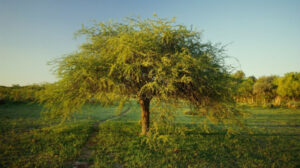We are in the heart of summer, which we’ve been waiting for all year, trying to relax so we can face the coming winter. But when the wind picks up, our minds immediately go to the fires. Can plants alleviate even a little of our anxiety? Yes, because there are certain plants with more or less resistance to the vortex of fire.
We call them fire-resistant plants and they have the ability to retain water in various parts of themselves, such as in their roots, leaves or shoots. The result is that they burn at a slower rate thus regulating the intensity of the fire. Pine trees, which are also often found in urban areas, belong to the category of plants with a rapid rate of ignition (fire-sensitive), which contributes to the rapid spread of fire. Pine, although a beautiful plant, can prove to be quite destructive in the event of a fire, as its needles are highly flammable and its pine cones can be blown a long distance, creating new outbreaks. Eucalyptus also belongs to this category. Plants that resist by limiting the spread of fire are slow-growing, evergreen plants with broad pale leaves, high in sap content, such as succulents, and low in essential oil content. Below you will learn about five of them to enhance your garden and home against fire.
Harupia, Ceratonia Siliqua of the Fabaceae family
The carob takes its name from the shape of its fruit, which resembles a wooden horn. It is an evergreen tree, native to our country, which can reach a depth of 18 meters in a year and is one of the most popular species for creating firebreaks in residential properties. It has been gaining ground more and more recently, both for its commercial role in the production of high nutritional value products, such as carob, and for its important environmental role, as it is a tree resistant to the dry thermal conditions of our country, with no special – or even no – care requirements. In addition, the strong root system of the carob tree is used to stabilise soils from erosion. The only thing to note is that it cannot withstand high altitude areas, as it freezes when the temperature drops below freezing.
Prickly pear, Opuntia ficus-indica of the family Cactaceae
It is one of the most popular Mediterranean cacti originating from Mexico. It is a perennial plant with large round thick leaves. It reaches a height of about 4 to 5 meters and has horizontal growth. It has no central trunk but consists of fleshy ellipsoidal-shaped shoots that are joined together like a puzzle and bear spines. The tips of its leaves are the tips of its delicious fruits, which have recently been gaining ground in culinary choices due to their special taste and nutritional value. It is a plant that requires very little care as it thrives in the most arid, stony soils. Particularly resistant to drought conditions, it creates impenetrable plant fences in gardens and country houses. In addition, with 90% of the plant part of the prickly pear containing water, it is difficult to burn and becomes a shield to protect your home from potential fire danger.
Yucca, Yucca sp. of the Asparagaceae family
Popular ornamental plant invades our yards as it is a very hardy species with no special care requirements. Evergreen plant looks like a cactus without being a cactus. It has a slow growth rate and can grow up to ten feet in length. It forms rosettes of leathery, lance-shaped leaves with thorns at the tips. The small root system it develops makes it a suitable plant for planting in pots. It forms an impressive cream ‘flower’ (bell-shaped) inflorescence in the center of the rosette of leaves from June to October. Care needs to be taken where you place it in your space as the leaves are sharp and there is a risk of injury from small children or pets. Finally, keep in mind that its leaves are toxic to pets if ingested.
Lichidambar, Liquidambar styraciflua of the Altingiaceae family
Sweetgum or simply Liquidambar is a wonderful deciduous tree originating from Mexico that is very well adapted to the Mediterranean conditions of our country. It has rich decorative foliage that in autumn gives us reddish-orange hues making it particularly beautiful. It can grow to over 20 meters so be careful when planting it to ensure sufficient space. It is an easy and hardy plant that can withstand dry and hot conditions as well as low temperatures. Broadleaf deciduous trees have a naturally high moisture content and therefore withstand fire quite well. Suitable for planting on sidewalks and also as a focal point of interest.
Cottonwood, Arbutus unedo, of the family Ericaceae
It is a hardy shrub reaching three meters and can be trained into a tree. With rich bright green compact foliage that persists through the winter, it is a fire-resistant plant. Native to many parts of Greece, it is perfectly adapted to the climatic conditions of our country. It forms white flowers at the end of autumn that will give orange round fruits, the well-known koumaras. It prefers sheltered positions and needs watering until it is satisfactorily established in your garden. Drought and frost tolerant. It has the ability to sprout immediately in the event of fire, thus protecting soils from erosion. Ideal plant for the formation of a Mediterranean-style border or for the bordering of country houses.
For as carefree a summer as possible, don’t forget to remove dead branches and grasses from your gardens as they are dead material helping to spread a potential fire.
Ask me anything
Explore related questions





